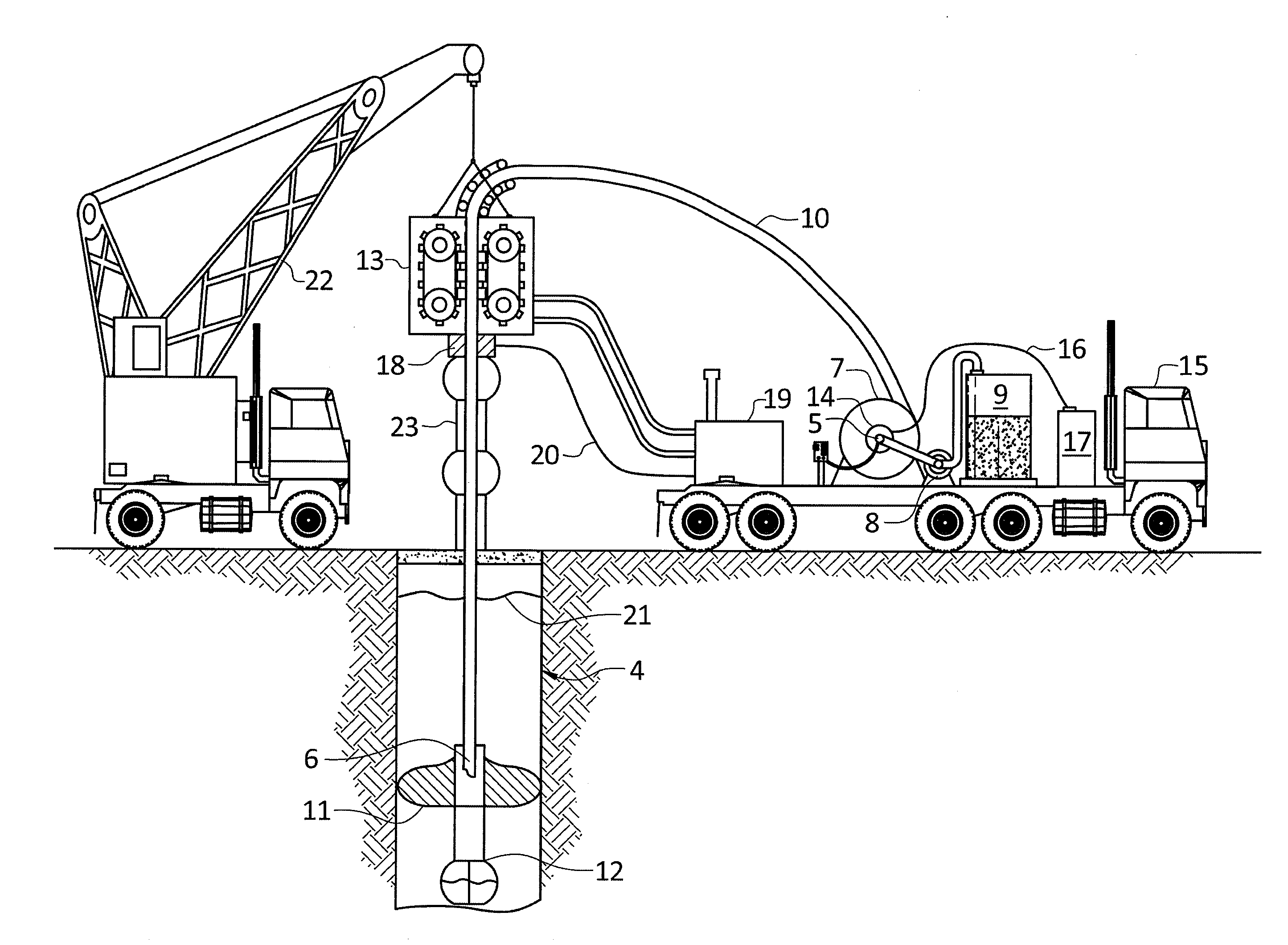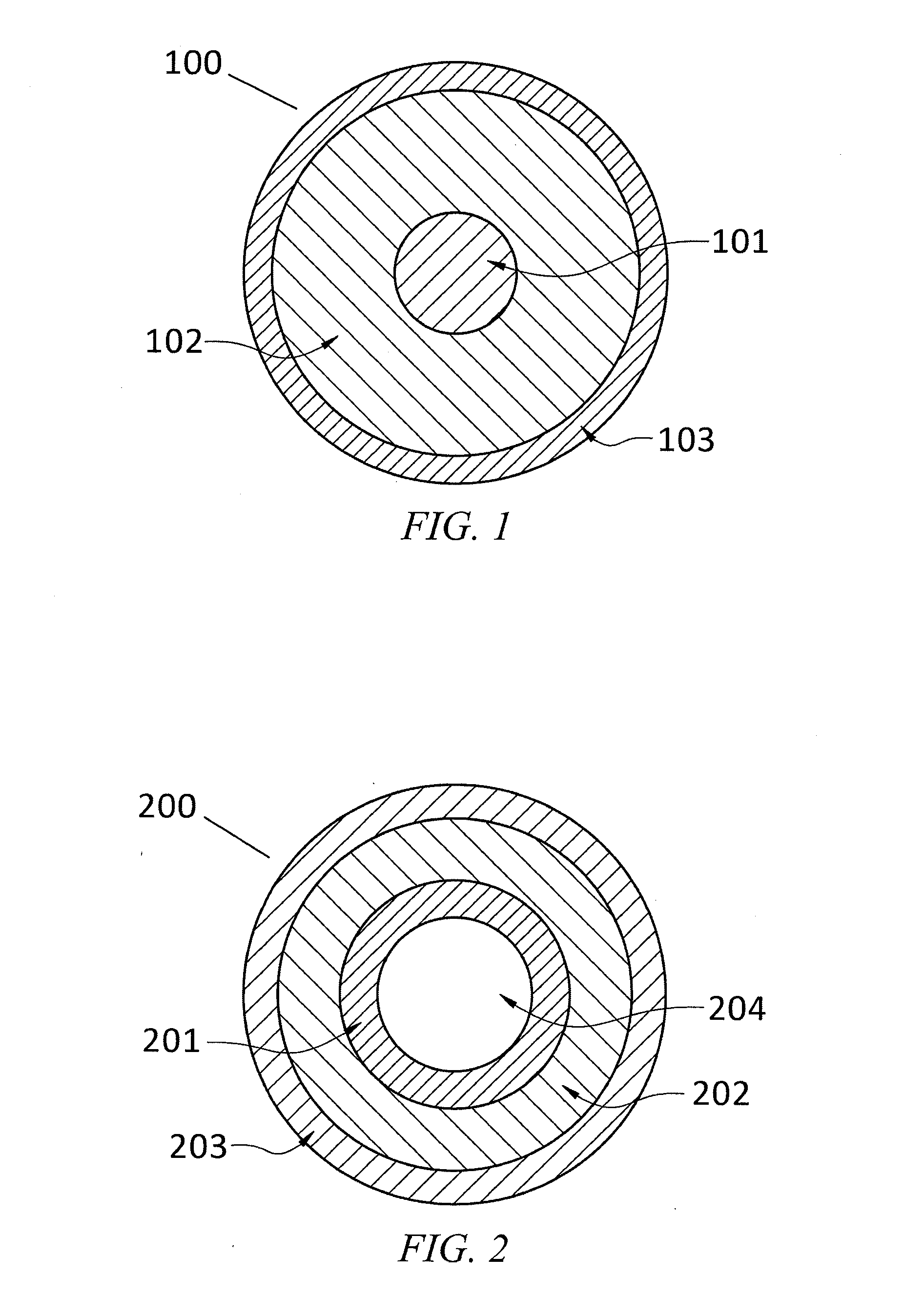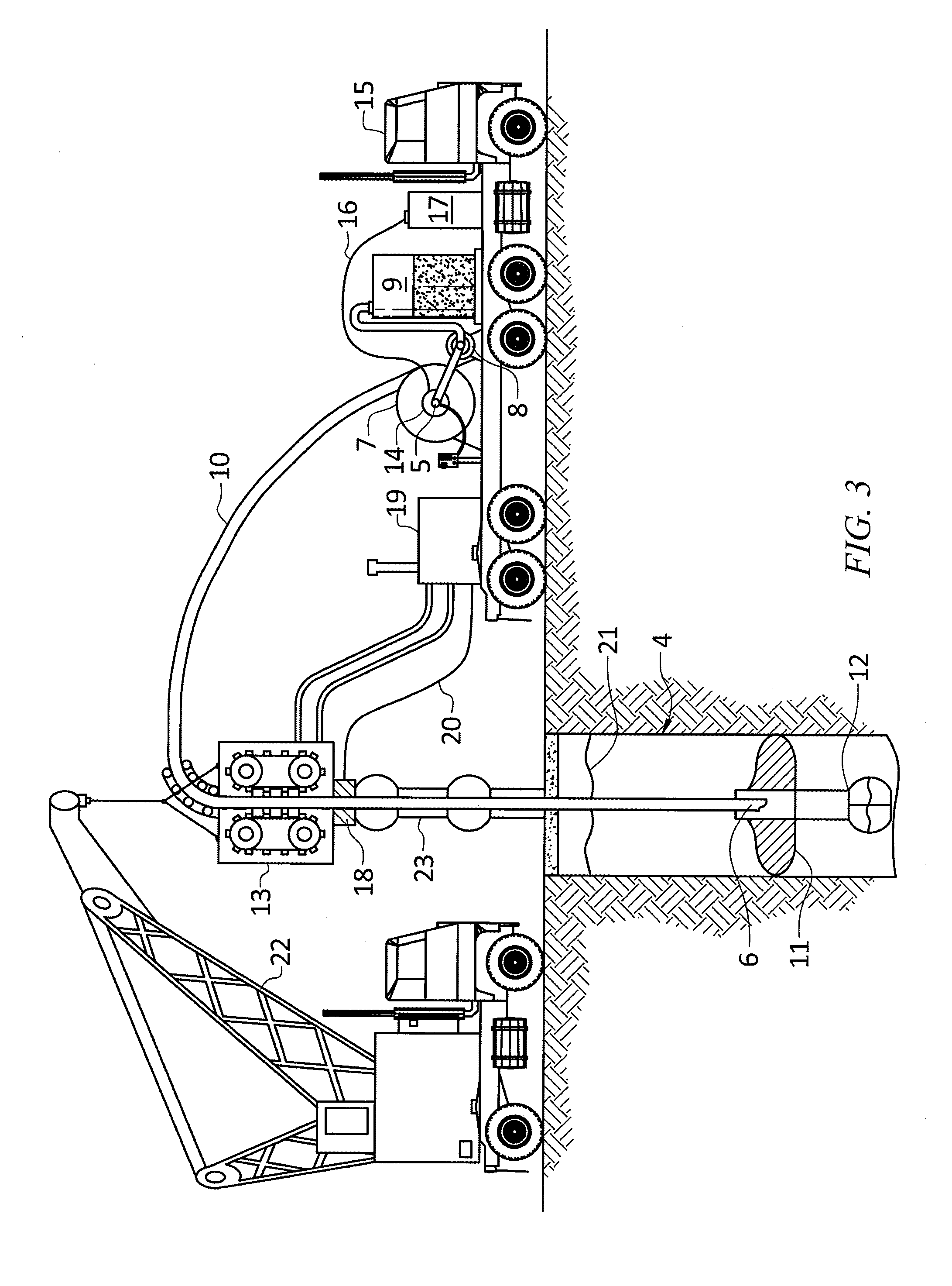Moreover, when an
optical fiber deployed in current
logging cable breaks or darkens, the current wire line logging cables are not easily amenable to repair or replacement of the
optical fiber.
As water depths from which hydrocarbons are extracted continue to get deeper, sometimes over 10,000 feet of
water depth, the weight of submersible electrical cables becomes a
limiting factor.
There are fundamental design problems with current industry teaching towards
electric wire line logging cable.
One such problem is related to the steel wires used as structural members and the combination of these wires and subsequent bundle or
wire wrap geometry with the electrical wires and optical fibers disposed in said current well logging cable systems.
Firstly, the initial
capital cost of the steel wires used as structural members in the logging wire line of the current state of the art reduces the number of wells that can afford the logging technology.
These cables are expensive and difficult to repair.
The weight of the additional steel for strength and
impact protection of the
electrical conductor cable requires expensive surface deployment and retrieval systems sufficient to deploy and extract the heavy
electric wire line cables.
For example, in ultra-deep wells a dual drum
capstan surface
logging system must be deployed as the collapse forces and loads on the inner most electrical wire line logging cable wraps on the
capstan drum of a simple single
capstan system become too great and fail the material of the electrical cable and insulation braided inside the steel
wire rope of today's logging systems.
This dual drum
system is very expensive and its large foot print poses challenges on offshore platforms, rigs, and vessels.
Moreover, the inability to repair current electrical wire line logging cables containing multiple braided steel
wire rope and
steel tube as strength members for the logging cables power and
signal transmission members made from
copper and
silicon dioxide is largely prohibitive.
These arrangements make repair difficult, as splicing and other repair operations involving copious numbers of braided strength wires, tubes and transmission members in a section of
electric wire line logging cable becomes difficult,
time consuming, and as a result, costly.
Hence large amounts of logging line per year are disposed as waste due to the difficulties and costliness of repairing it.
The operators of such cable systems typically remove and discard, from the distal end of the electric wire line logging cable hundreds of feet or more after each operation, which is continually compromised during use.
Wire logging line becomes compromised by the auto-gyro affect caused from well logging and the resulting cold working and fatigue stressing induced on the cables.
Therefore due to the configuration of the currently used logging wire line cables, the cable is inherently damaged in normal operations and there are no quick and inexpensive ways to repair the wire line.
It should be noted that while
distal portion of current arts logging wire line cable are most often compromised, all portions are subject to fatigue, and wear damage to well gases and liquids having deleterious effects on electrical cable and steel braided wires of the cable.
This auto-gyro twisting phenomena presented by well bores and current logging line systems is a further detriment to the disposal and use of optical
fiber within the current wire line configurations for well logging cables.
The stretch and twist resistance of optical fibers of the current state of the art logging cables causes severe damage to the optical fibers resulting in large quantities of optical fibers in such logging lines to be broken.
Steel wire has vastly different thermal coefficients of
thermal expansion and elastic stretch before deformation as opposed to optical
fiber, hence current methods of disposing optical
fiber in wire lines made of steel is limiting the use of optical fibers.
Once this occurs the current state of the art does not teach towards repairing or replacement of the logging line nor the optical fiber therein and damaged optical fiber in braided wire line logging cables is discarded as waste.
Therefore, the current state of the art offers no commercial means to repair the optical fiber in a broken electrical wire line cable
system, nor does it present a logging line system amenable to the differences between optical fiber and steel wire to enhance the life of the optical fibers.
Optical fibers in the current art logging lines fail for many reasons including
hydrogen darkening,
neutron bombardment, different thermal coefficients of expansion between the optical fiber and the current arts steel
wire rope systems, and impacts loads that can shatter the optical fiber like those that occur during perforating.
Hence
copper electrical cable is not sufficiently strong to hang or deploy in a well or in deep offshore cable systems from platforms to the sea floor, as it cannot sustain its own weight to depths much beyond approximately 3,000 feet.
Moreover, in well logging operations cannot support the weight of hanging a suite of subterranean logging tools, nor tensile or torque loads induced on logging cables in wells, or marine water depths where currents can cause continual movement of submersible cables.
 Login to View More
Login to View More 


